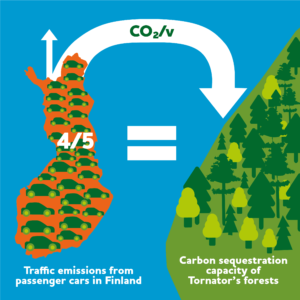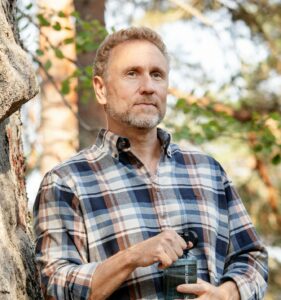There is no other country in which forests are as important to people’s livelihoods as in Finland, nor will there ever be. For several centuries, we in Finland have depended on our forests for our economic and social wellbeing, as well as for ecological wellbeing. With this in mind, it is natural that the “advice” about forest use coming from Central and Southern Europe has felt strange to many people in Finland: how could they possibly understand or see forests in the way as us, for whom forests have always been such an important part of life? Then again, an unreasonably strict and negative attitude is unlikely to do much good. Finland has a reputation as a reliable international operator, which puts us in a position to promote understanding of forests and engage in constructive discussions in any forum.
Feelings are one reason for the recent heated debates on the role of the forests in mitigating climate change. Forests mean different things to different people, and the issue is often emotionally charged. Feelings are necessary, of course, but they can also easily obscure facts. It is common knowledge that forests play a role in sequestering carbon dioxide from the atmosphere, but it is not easy to truly appreciate just how enormous that effect really is. For example, Tornator’s forests alone (which account for 3 per cent of all of Finland’s forests) can sequester almost 80 per cent of the traffic emissions created by passenger cars in Finland annually. That’s a lot. And this is possible only because of the professional and sustainable forestry that has been practised for decades.

The opposite of fact, of course, is fiction. One unfortunately common misconception is that felling of trees results in carbon dioxide emissions. Felling a tree does not release anything. The carbon dioxide that is sequestered in the tree will continue to be stored in the wood product that is used to replace a product created from fossil-based raw materials, which are non-renewable. New trees are planted in place of felled trees, and in this way a new carbon sink is created. This is the sustainable, circular economy at its best.
Another falsehood that is often brought up in discussions about climate change is that only logs, or long-lasting materials for the needs of construction and the furniture industry should be taken from forests. In reality, forests have to be thinned so that the trees can grow to become as large and sturdy as logging requires. The smaller-diameter trees that are felled in thinning can be used for pulp, which in turn is used to produce packaging materials that are a sustainable alternative to plastic, hygiene products and, increasingly, innovations for the clothing and pharmaceutical industries, amongst others. In mitigating climate change, this is precisely where the unique diversity of Finland’s forests is beneficial: we can replace fossil-based raw materials with renewable wood raw materials in a way that uses every part of the tree, and all stages of forest growth. Furthermore, the annual growth of forests exceeds the amount that is felled, which means that the amount of growing stock increases every year. We can be genuinely proud of our success – there is nothing like it anywhere else in the world. And we have nothing to blame ourselves for in how we handle our forests – nor does anybody else.
Of course, nothing in life is perfect: the forestry industry has also had negative effects, which can mainly be seen in the loss of biodiversity. As a result, responsible operators in the forestry industry do not settle for merely meeting the minimum regulatory requirements in forest management – instead, they plan their forest management in a way that respects nature and protects valuable habitats. You can read about one example of this in Tornator’s Biodiversity Program.
To sum up, Finland is a rare example of a country where the overall sustainability of forestry can be seen in such a tangible way. Coordinating economic, social, and ecological effects of forests will certainly be important in the future as well. When it comes to combating climate change, the most important role of forests is photosynthesis – that is, carbon sequestration – not storing carbon. To keep forests healthy, Finland must promote measures that support forest growth and active forest use. After all, there are more than enough unpleasant truths about the effects of passive forest use in the rest of the world.

Henrik Nieminen, CEO